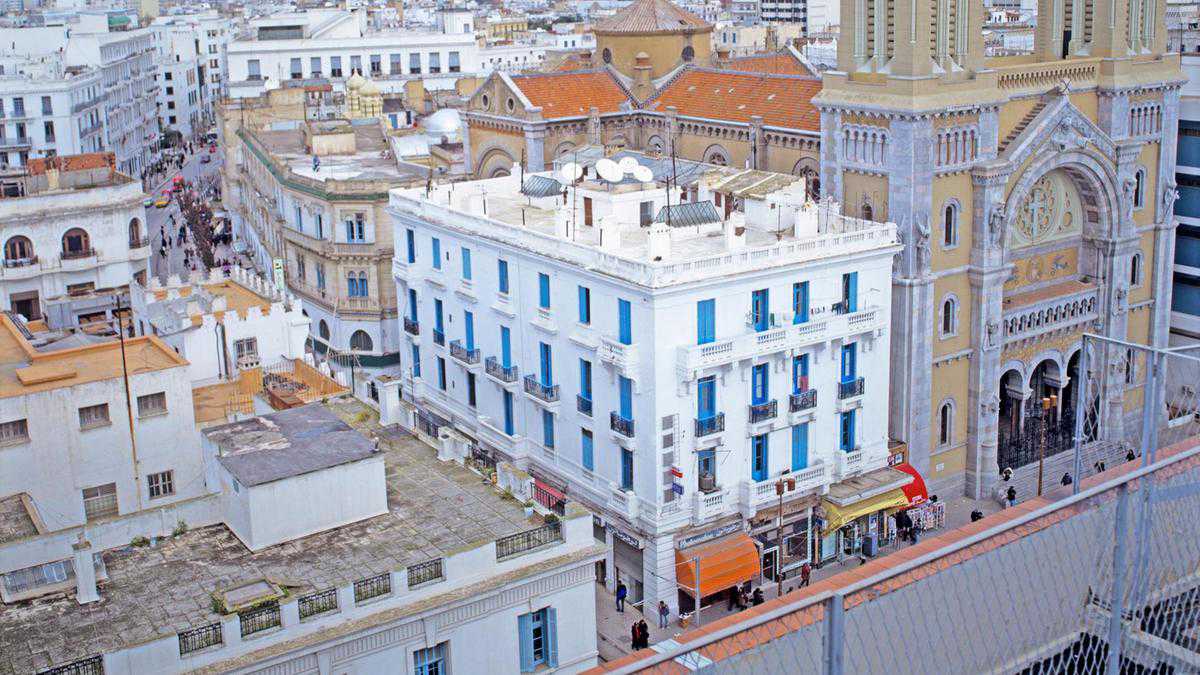Why now is the perfect time to visit a resurgent Tunis
23 June, 2019

Why Tunis
Standing on the grand Place de l’Independance, where crowds sit outside cafes and boutiques are buzzing, it looks like Tunis has finally returned as one of the most intriguing city destinations in North Africa. This was where the touchpaper was lit, igniting the Arab uprisings in 2011. The country has peacefully maintained democracy since, but cruelly suffered from the effects of terror attacks in 2015 that devastated its travel industry. Now, the tourists are coming back, encouraged by low prices and diverse attractions, ranging from Unesco World Heritage Sites, beach resorts, world-standard museums, gourmet but affordable cuisine and, above all, a friendly welcome from the locals, who seem delighted and proud to see visitors in their city again.
The hidden mansions of the ancient Medina quarter are slowly being transformed into chic B&Bs and boutique hotels similar to Marrakech’s riads. A top spot is newcomer Dar El Jeld, which is housed in a traditional Ottoman palace, with large suites, a tempting spa and hammam. Its eponymous restaurant, right opposite, also happens to be the top address for gastronomic Tunisian cuisine.
A similar 18th-century villa in Sidi Bou Said, Dar Said, has also become a small boutique bolthole. And for travellers looking for reassuring international-standard luxury, the stunning Four Seasons Tunis opened its palatial doors last year, right by the waters of the Mediterranean in the resort-style Tourist Zone, 20 kilometres from the city centre.
Find your feet
The Unesco World Heritage Medina and souks are a delight to discover, safe and free of the interminable tourist hassle that plagues many north African bazaars. At the heart is Al Zaytuna, reputedly the oldest mosque in the Maghreb and home to one of Islam’s most important universities. The Medina and French colonial quarter can all be explored on foot, but this is a city where attractions are spread out as far as the coast, so local taxis are crucial for getting around.
First stop should be the Bardo National Museum, renowned for its unprecedented collection of Roman mosaics, followed by the evocative ruins of the Roman city of Carthage. Finish with a sunset stroll through the picturesque blue and white houses, cafes and boutiques of Sidi Bou Said, a romantic artist’s village.
Meet the locals
It feels as though all of Tunis stops off for people-watching on the sunny terraces of legendary locales like Cafe de Paris and Cafe La Rotonde on Avenue Habib Bourguiba, the city’s Champs Elysees, built in grand Parisian style by the French colonial rulers in what they termed La Nouvelle Ville. For a slice of local life, brave the teeming crowds in the recently restored Art Nouveau Marche Central, a foodie paradise where everyone does their shopping. And then head to the Medina’s souks for mint tea, sticky patisseries and a shisha at one of the scores of bars, like the cool Cafe Dribat just behind the Kasbah.
Book a table
In the heart of the Medina, push open the door of Fondouk El Attarine and enter the vast open hall of a 17th-century caravanserai, once home to the souk’s perfume merchants, now a lunchtime institution. It’s perfect for discovering surprising Tunisian cuisine: a crisp brick stuffed with egg and tuna or sea bass “kabkabou”, roasted with tomatoes, capers, olives, saffron and lethal home-pounded harissa. Prefer a gourmet Parisian-style restaurant? Reserve a spot at L’Astragale in La Nouvelle Ville and feast on a juicy Chateaubriand or confit de canard.
A foodie institution in Sidi Bou Said, Au Bon Vieux Temps is the obligatory celebrity address for its to-die-for views, and local specialities like stuffed squid or fish couscous. For a complete change of scene, head to La Marsa’s sandy beach, where the fashionable Le Golfe is more Saint Tropez than Tunis, with classic French and Italian cuisine, including its signature Linguine alla Bottarga.
Shoppers’ paradise
The souks of Medina have high-quality handicrafts for every taste: “balgha” leather slippers, carpets, colourful ceramics and pungent spices. Don’t miss the gold jewellery in Souk El Berka (formerly the site of the old slave market), while Hamdi Mondher’s Le Parfumeur offers traditional essential oils distilled from jasmine, geranium and bitter orange, as well as copies of popular fragrances, such as Chanel N°5. The boutique is opposite the ancient Al Slimina Madrasa, which hosts art exhibitions. For a serious dose of modern retail therapy, grab a taxi to the chic Berges du Lac neighbourhood, where two modern malls, Square 5 and Tunisia Mall, stock major international fashion brands. Art lovers will find galleries hidden down the side streets of Sidi Bou Said, with Galerie A?Gorgi displaying works by local contemporary painters.
What to avoid
Don’t take a guide in the souks. Find your own bargains rather than being led to boutiques where the guide picks up his commission.
What not to miss
The Palais d’Orient is an 18th-century Ottoman palace filled with artisan crafts. On its spectacular ceramic-covered rooftop, discover the perfect Tunis panorama.
